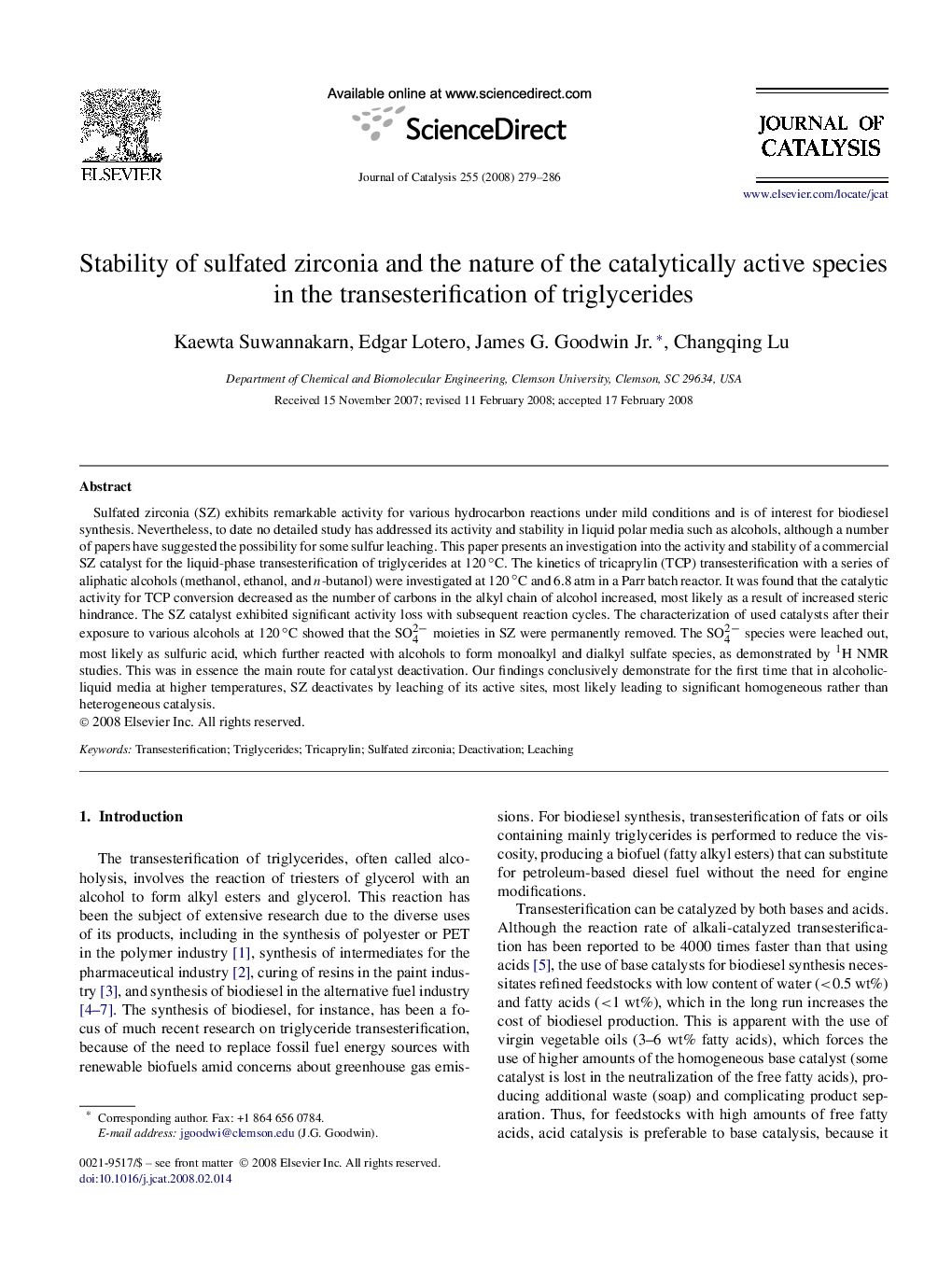| Article ID | Journal | Published Year | Pages | File Type |
|---|---|---|---|---|
| 63038 | Journal of Catalysis | 2008 | 8 Pages |
Sulfated zirconia (SZ) exhibits remarkable activity for various hydrocarbon reactions under mild conditions and is of interest for biodiesel synthesis. Nevertheless, to date no detailed study has addressed its activity and stability in liquid polar media such as alcohols, although a number of papers have suggested the possibility for some sulfur leaching. This paper presents an investigation into the activity and stability of a commercial SZ catalyst for the liquid-phase transesterification of triglycerides at 120 °C. The kinetics of tricaprylin (TCP) transesterification with a series of aliphatic alcohols (methanol, ethanol, and n-butanol) were investigated at 120 °C and 6.8 atm in a Parr batch reactor. It was found that the catalytic activity for TCP conversion decreased as the number of carbons in the alkyl chain of alcohol increased, most likely as a result of increased steric hindrance. The SZ catalyst exhibited significant activity loss with subsequent reaction cycles. The characterization of used catalysts after their exposure to various alcohols at 120 °C showed that the SO2−4 moieties in SZ were permanently removed. The SO2−4 species were leached out, most likely as sulfuric acid, which further reacted with alcohols to form monoalkyl and dialkyl sulfate species, as demonstrated by 1H NMR studies. This was in essence the main route for catalyst deactivation. Our findings conclusively demonstrate for the first time that in alcoholic-liquid media at higher temperatures, SZ deactivates by leaching of its active sites, most likely leading to significant homogeneous rather than heterogeneous catalysis.
